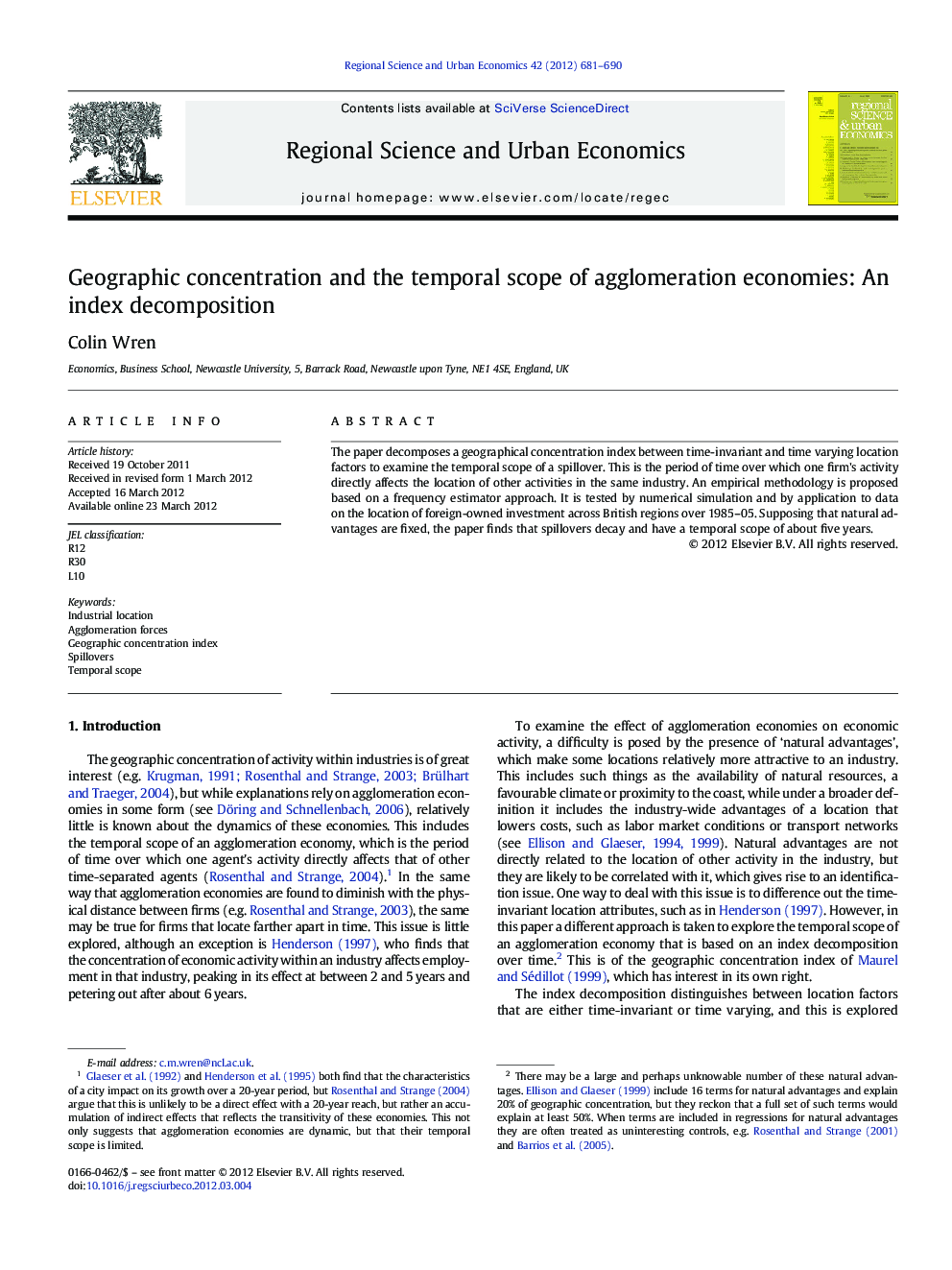| Article ID | Journal | Published Year | Pages | File Type |
|---|---|---|---|---|
| 983736 | Regional Science and Urban Economics | 2012 | 10 Pages |
The paper decomposes a geographical concentration index between time-invariant and time varying location factors to examine the temporal scope of a spillover. This is the period of time over which one firm's activity directly affects the location of other activities in the same industry. An empirical methodology is proposed based on a frequency estimator approach. It is tested by numerical simulation and by application to data on the location of foreign-owned investment across British regions over 1985–05. Supposing that natural advantages are fixed, the paper finds that spillovers decay and have a temporal scope of about five years.
► An index of geographic concentration is decomposed by time period. ► The purpose is to estimate the temporal scope of a (direct dynamic) spillover. ► An empirical methodology is proposed based on the frequency estimator approach. ► The decomposition is explored by numerical simulation and with location data. ► The temporal scope is estimated at 5 years on average for 2-digit industries.
